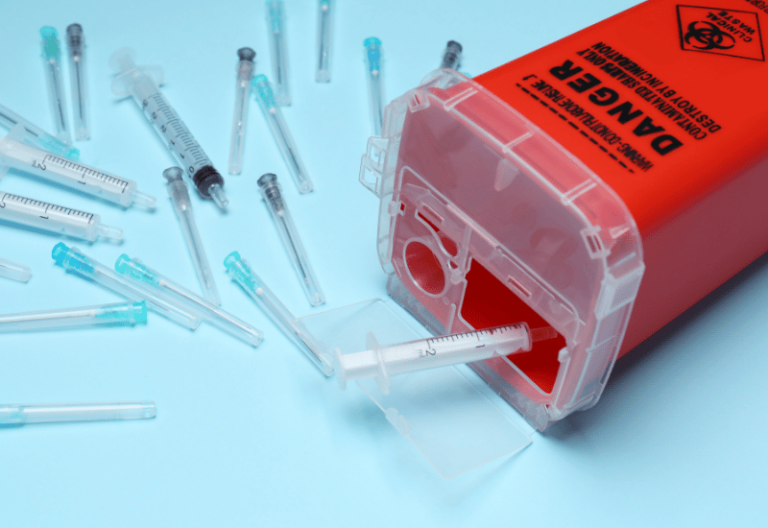The healthcare industry generates 30% of the world’s data from disparate healthcare systems. FHIR interoperability ensures these systems can exchange and share data efficiently, making it easier for healthcare providers to work together towards a common goal.
Table of Contents

What Is FHIR Interoperability?
FHIR interoperability happens when healthcare information systems from various departments or organizations communicate, exchange, and use electronic health data following the HL7 global industry standard. It should be noted that FHIR is a healthcare IT standard developed by HL7 International.
FHIR (Fast Healthcare Interoperability Resources) defines standardized data formats, such as JSON (JavaScript Object Notation) and XML (eXtensible Markup Language), for representing healthcare information. These standards ensure consistency and compatibility across different systems and implementations.
For example, a hospital can facilitate seamless patient transfers by sending the patient’s admission and discharge information from their EHR to the healthcare system of another medical institution. FHIR standards ensure that the data being transmitted or exchanged is compatible, accessible, accurate, and up to date.
Another example of FHIR interoperability is when remote patient monitoring applications collect real-time patient data from wearable devices. FHIR standards enable the smooth transmission of the collected information to healthcare systems, avoiding issues with platform compatibility.
Interoperability is crucial for EHRs, clinical information systems, laboratory systems, and other healthcare systems to exchange data seamlessly. With the FHIR interoperability standard, these systems can overcome the challenges associated with data silos and proprietary data formats. Instead, they’ll all use a common framework for exchanging healthcare data.

Key Concepts of FHIR Interoperability
Modularity and a resource-centric approach are the core concepts of FHIR. These concepts promote an adaptable framework that encourages interoperability.
Resources
FHIR defines a set of resources and data elements representing various discrete units of healthcare information. Examples include patients, medications, providers, conditions, observations, appointments, and procedures.
These resources are the building blocks of FHIR interoperability. They are consistently organized, so it’s easier for systems to understand them and exchange data. Each resource also gets a unique URL, so it’s easier to access them independently.
RESTful API and other familiar technologies
FHIR uses communication technologies like RESTful API (Representational State Transfer), XML, JSON, and HTTP. This approach simplifies integration with existing and familiar systems. Using modern technologies enables lightweight, stateless interaction between systems using standard web protocols.
As a result, developers without prior healthcare IT experience can rapidly create integrations. This also allows FHIR to run web-friendly applications for standard health systems.
Modular and extensible
FHIR is designed to be modular and extensible, allowing organizations to adapt the standard to their specific needs. Organizations can create custom profiles, extensions, and value sets that meet unique use cases and requirements.
This flexibility makes it easier to implement and customize FHIR-based solutions in diverse healthcare environments without sacrificing interoperability.
Semantic interoperability
FHIR uses standardized terminology to ensure systems can accurately interpret and understand the meaning of data elements. These terminologies provide a common language for describing clinical concepts and supporting decision-making.
Standardized terminologies help healthcare systems have a meaningful exchange of health information.
Privacy and security
FHIR implements robust security measures like authentication, authorization, encryption, and auditing to protect sensitive health data and safeguard patient privacy. These security features include OAuth 2.0 and OpenID Connect, both modern security protocols.
By using the FHIR standard, any data exchanged among systems remains safe from prying eyes. FHIR also ensures data access and exchange comply with regulatory requirements like HIPAA.
Search queries and versioning
FHIR enables the efficient retrieval of relevant information using comprehensive querying and search functionalities. Queries can be based on resource attributes, which leads to flexible data retrieval methods.
The open standard also incorporates versions to manage changes in resources over time. This allows for the retrieval of specific resource versions and accurate historical data tracking.
Implementation guides
HL7 publishes implementation guides that provide detailed specifications and best practices for implementing FHIR in specific use cases and healthcare domains. These guides ensure consistency and interoperability across different implementations. It guides data exchange formats, workflows, and terminology bindings.
Important Considerations for FHIR Interoperability
When implementing FHIR, the data used must be accurate, complete, and consistent across systems. This will help avoid misinterpretation or errors during the exchange. Organizations should implement FHIR standards correctly by adhering to the latest FHIR specifications. This could be the latest resource structure, data formats, and terminology bindings. Achieving a standard conformance will ensure compatibility and consistency across systems.
Developers should also thoroughly test interoperability capabilities to validate system behavior and identify potential issues. These tests should encompass various scenarios, including data exchange, error handling, and compatibility with different implementations.
Another vital consideration is obtaining patient consent. There must be mechanisms for acquiring and managing patient consent for data exchange that complies with privacy regulations and ethical principles. It’s essential to protect the confidentiality and security of healthcare information. Organizations must use robust security measures like access controls, audit logs, and encryptions to safeguard sensitive health data against unauthorized usage and data breaches.
Finally, there must be clear governance policies and procedures for managing healthcare data across interoperable systems. Defining clear roles, responsibilities, and accountability frameworks is crucial, for it signifies how an organization manages its systems to ensure security and efficiency.







